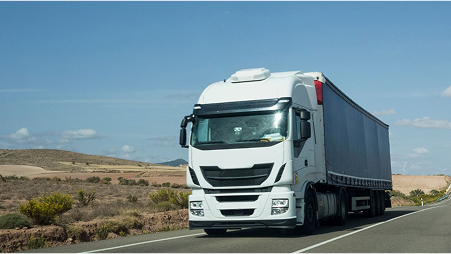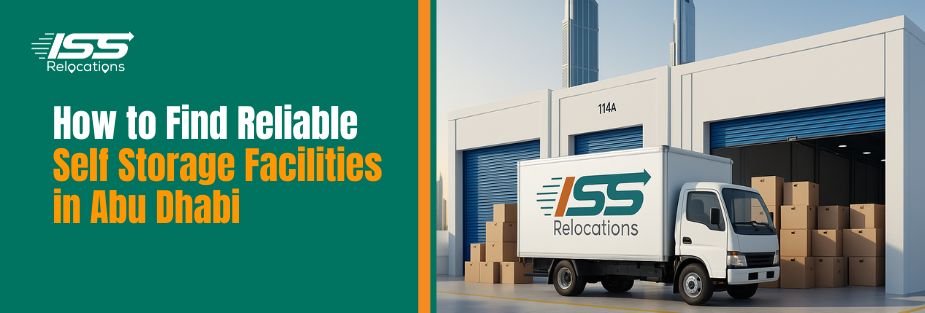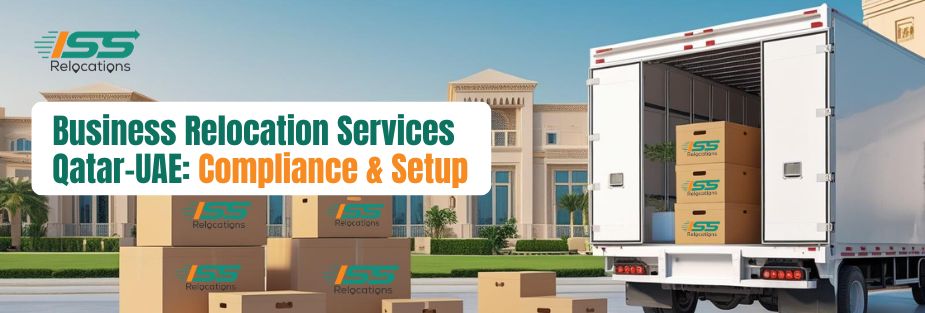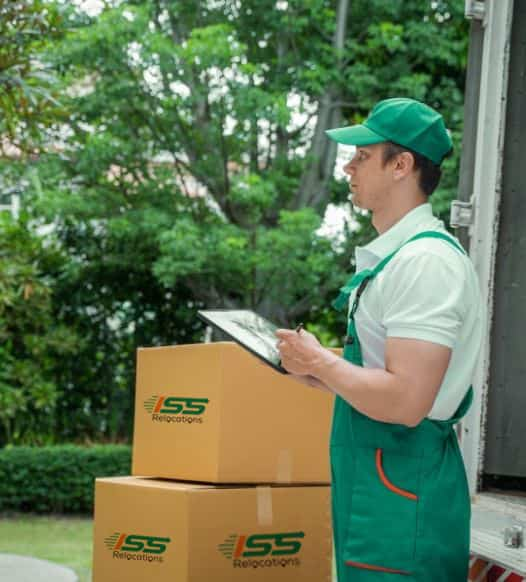
The Future of Mobility Services in the Moving Industry
The moving industry has always been an integral part of our society, helping people relocate to new homes, offices, and even countries. However, the industry has undergone significant changes over the years, thanks to technological advancements and changing customer preferences. Mobility services are one such aspect that has become increasingly important in the moving industry. This blog will explore the history of the moving industry, the current state of mobility services, and the future of these services.
Explanation of Mobility Services in the Moving Industry
Mobility services refer to the services that are provided to help people and businesses relocate. These services can range from packing and unpacking to transportation and storage. Mobility services are essential to ensure that the relocation process is smooth and hassle-free. The industry has evolved over the years, with new technologies and services being developed to cater to changing customer demands.
The Importance of Mobility Services
Mobility services play a crucial role in the moving industry as they ensure that the relocation process is efficient, safe, and cost-effective. These services help people and businesses relocate to new locations with minimal hassle, and they also help protect their possessions during transportation. Additionally, mobility services can help reduce the stress and anxiety that often comes with moving, making the entire process more manageable for individuals and businesses.
Brief Overview of the Future of Mobility Services in the Moving Industry
The future of mobility services in the moving industry looks promising, with new technologies and services being developed to cater to changing customer demands. These new services will provide more efficient, safe, and cost-effective ways of moving, making the entire process more accessible and hassle-free for customers. The use of technology will be a significant driver of these changes, as companies look for new and innovative ways to improve their services. Organizations like the Worldwide ERC Foundation continue to strengthen global workforce mobility through leadership and advocacy. Learn more in this update on their newly appointed trustees and their role in shaping mobility services.
Background on the Moving Industry
The moving industry has been around for a long time, with people and businesses needing to relocate to new locations for various reasons. In the past, moving was a manual process, with people having to pack their belongings and transport them using carts or wagons. However, with the advent of technology, the industry has evolved, with new transportation methods being developed, such as trucks and airplanes.
The moving industry is currently a multi-billion-dollar industry, with millions of people and businesses relocating every year. The industry is highly competitive, with numerous companies offering a range of services to customers. However, the industry also faces several challenges, including increasing competition, rising costs, and changing customer demands.
One of the main challenges facing the moving industry is increasing competition. With the rise of new technologies and services, new players are entering the market, making it more challenging for established companies to maintain their market share. Additionally, rising costs, such as fuel prices and labour costs, are making it more expensive for companies to operate. Finally, changing customer demands are also posing challenges, as customers now expect more personalized services and greater flexibility.
Technology has had a significant impact on the moving industry, with new services and technologies being developed to cater to changing customer demands. For example, companies now use GPS tracking and real-time updates to keep customers informed about the progress of their move. Additionally, new technologies are being developed to improve the efficiency and safety of the moving process, such as automated packing systems and drones for transportation.
Mobility Services in the Moving Industry
A. Types of Mobility Services in the Moving Industry
Mobility services in the moving industry come in different types, each catering to a specific need of the customer. One of the most common types of mobility services in the industry is the full-service moving. Full-service moving entails the moving company handling everything from packing to loading, transport, and unloading. It is a comprehensive package, and it comes at a premium.
Another type of mobility service is the self-service moving. In self-service moving, the moving company provides the moving truck, and the customer packs and loads their belongings into the truck. The company then transports the items to the destination, where the customer unloads their belongings. It is cheaper than full-service moving but requires the customer to do a significant amount of work.
Portable storage containers are another type of mobility service in the industry. They are like large boxes that customers pack their belongings into. The company then transports the container to the destination where the customer unloads their items. It is suitable for people who need to store their belongings temporarily.
B. The Benefits of Mobility Services
Mobility services come with several benefits, which is why they are popular with customers. First, they save time and reduce stress. When you hire a moving company, you do not have to worry about the logistics of the move, leaving you with time to focus on other essential things.
Second, mobility services are convenient. The moving company handles everything from packing to loading, transport, and unloading. All you have to do is show up at your new location and unpack your belongings.
Third, mobility services are cost-effective. Although full-service moving comes at a premium, it is a cost-effective option, especially when you consider the cost of doing everything yourself. Self-service moving and portable storage containers are also cheaper options.
C. The Challenges Facing Mobility Services
Although mobility services in the moving industry have several benefits, they come with their challenges. One of the most significant challenges is finding reliable and trustworthy movers. The industry is notorious for scams, and many customers have fallen victim to unscrupulous movers.
Another challenge is the logistics of the move. Moving companies have to ensure that the move is timely and that the customer’s belongings are not damaged in transit. This requires meticulous planning and execution, which can be challenging, especially when dealing with long-distance moves.
D. The Impact of Technology on Mobility Services
Technology has had a significant impact on mobility services in the moving industry. Moving companies now use sophisticated software to plan and execute moves, making the logistics of the move more efficient. They also use GPS tracking systems to monitor the location of the moving trucks, ensuring that the move is timely.
Furthermore, technology has made it easier for customers to find reliable and trustworthy movers. Customers can now read reviews online and compare prices, making it easier to find a mover that suits their needs.
Trends in Mobility Services in the Moving Industry
A. The Rise of Automation in Mobility Services
Automation is a growing trend in mobility services in the moving industry. Moving companies are now using robots and automation to streamline the process of packing and loading. For example, some moving companies now use robots to pack fragile items, reducing the risk of damage in transit.
B. The Growth of On-Demand Mobility Services
On-demand mobility services are also on the rise in the moving industry. Customers now expect to be able to book a moving company at any time, and many moving companies are meeting this demand by offering 24/7 service.
C. The Use of Data Analytics in Mobility Services
Data analytics is another trend in mobility services in the moving industry. Moving companies are now using data analytics to optimize their operations, reduce costs, and improve customer service. For example, data analytics can help identify the most popular moving destinations, the busiest times of year, and the types of services that customers are most interested in. This information can be used to better allocate resources and improve service delivery.
One way that data analytics is being used in the moving industry is through the use of customer feedback. Moving companies are using feedback from customers to identify areas where they need to improve their services. This feedback can be collected through online surveys, social media platforms, or even through direct feedback from customers. By analyzing this feedback, moving companies can identify common issues and work to address them.
Another way that data analytics is being used in the moving industry is through the use of predictive analytics. Predictive analytics involves analyzing data to identify patterns and predict future outcomes. For example, moving companies can use predictive analytics to forecast demand for their services, allowing them to allocate resources and staff accordingly. Predictive analytics can also be used to identify potential issues before they arise, allowing companies to take proactive measures to prevent them.
Overall, the use of data analytics in mobility services has the potential to revolutionize the moving industry. By leveraging the power of data, moving companies can optimize their operations, reduce costs, and improve customer service. As data analytics technology continues to advance, we can expect to see even more innovative uses of data in the moving industry.
D. The Impact of Technology on Mobility Services
Technology is having a significant impact on mobility services in the moving industry. From automation to artificial intelligence, new technologies are transforming the way that moving companies operate. Here are some of the key ways that technology is impacting mobility services:
Automation: Automation is one of the most significant technological trends in the moving industry. Moving companies are increasingly using automation to streamline their operations and reduce costs. For example, automated systems can be used to load and unload trucks, reducing the need for manual labour. Additionally, automated systems can be used to track inventory, reducing the risk of lost or damaged items.
Artificial Intelligence: Artificial intelligence is another technology that is having a major impact on mobility services. Moving companies are using AI-powered systems to optimize their operations and improve customer service. For example, AI-powered chatbots can be used to provide customers with real-time support, while AI-powered systems can be used to optimize delivery routes and reduce transit times.
Virtual Reality: Virtual reality is also being used in the moving industry to improve customer experiences. Moving companies are using virtual reality technology to provide customers with a realistic preview of their new home or office. This can help customers visualize their new space and make more informed decisions about their move.
Internet of Things (IoT): The Internet of Things is a network of connected devices that can communicate with each other and share data. In the moving industry, IoT technology is being used to track inventory, monitor the condition of goods during transport, and provide real-time updates to customers.
Overall, technology is playing a critical role in the evolution of mobility services in the moving industry. As new technologies continue to emerge, we can expect to see even more innovative uses of technology in the industry.
Additionally, government policies and international regulations are becoming key influencers in how mobility services evolve. Learn more about recent public policy proposals impacting workforce mobility that could shape the industry’s direction.
The Future of Mobility Services in the Moving Industry
A. Predictions for the future of mobility services
The future of mobility services in the moving industry looks promising. According to a report by Allied Market Research, the global mobility services market is expected to reach $1.75 trillion by 2028, growing at a CAGR of 24.7% from 2021 to 2028. This growth can be attributed to the increasing demand for mobility services due to urbanization, rising population, and the need for efficient transportation.
One of the predictions for the future of mobility services is the increased adoption of automation. As mentioned earlier, automation has already started to gain traction in the moving industry, and it is expected to continue to grow in the future. Automated vehicles, drones, and robots are likely to become more prevalent in the moving industry, as they can help reduce costs and improve efficiency. For example, self-driving trucks can transport goods faster and more efficiently, while drones can be used for last-mile deliveries in congested urban areas.
B. The Impact of Emerging Technologies on Mobility Services
Emerging technologies are also expected to have a significant impact on mobility services in the moving industry. Some of these technologies include blockchain, artificial intelligence (AI), and the Internet of Things (IoT). For instance, blockchain can help enhance the security and transparency of transactions in the moving industry, while AI and IoT can help improve operational efficiency and customer experience.
One example of the use of emerging technologies in the moving industry is the partnership between IBM and Maersk. The two companies developed a blockchain platform called Trade Lens, which is designed to streamline the global supply chain by providing a secure and transparent way to track the movement of goods. The platform uses AI and IoT to collect and analyze data, providing valuable insights that can help optimize supply chain operations.
Related Reading – Enhancing Mobility Industry Sustainability, Inclusivity, and Responsibility
C. The Role of Sustainability in the Future of Mobility Services
Sustainability is another factor that is likely to shape the future of mobility services in the moving industry. Consumers are becoming increasingly conscious of their environmental impact, and they are looking for greener transportation options. This trend is expected to drive the adoption of sustainable mobility services in the moving industry.
Moving companies can adopt sustainable practices by using electric or hybrid vehicles, reducing carbon emissions, and implementing eco-friendly packaging materials. Additionally, the use of shared mobility services, such as carpooling or bike-sharing, can help reduce the number of vehicles on the road, leading to a decrease in carbon emissions and traffic congestion.
D. The Potential Challenges Facing the Future of Mobility Services
Despite the promising outlook for mobility services in the moving industry, there are potential challenges that could impact their growth. One of these challenges is the regulatory environment. As the industry becomes more automated and relies more on emerging technologies, there will be a need for new regulations to ensure safety and security. Additionally, privacy concerns may arise as more data is collected and analyzed.
Another potential challenge is the need for a skilled workforce. As the industry becomes more automated, there may be a need for workers with new skills, such as data analytics and automation. Companies will need to invest in training and development programs to ensure their workforce can adapt to these changes.
Conclusion
In conclusion, mobility services are becoming increasingly important in the moving industry as they provide convenience, safety, and efficiency for customers. From the historical perspective, the moving industry has come a long way, and with the advancements in technology, it is poised for further growth and development.
The future of mobility services in the moving industry is very promising, with emerging technologies like automation, IoT, and blockchain set to revolutionize the industry. Predictions show that the demand for on-demand mobility services will continue to grow, and data analytics will play an increasingly important role in improving the efficiency of mobility services. ISS Relocations is a leading relocation company that understands the importance of mobility services in the moving industry. With their commitment to hassle-free relocation of all goods, machinery, and items without any damage, they are well-positioned to take advantage of the emerging trends in mobility services.
Plan Stress-free Move with Top Moving Company in UAE - ISS Relocations

Frequently Asked Questions
What is the future of mobility?
The future of mobility focuses on smart, sustainable, and technology-driven solutions for seamless transportation and relocation. ISS Relocations integrates the latest innovations in the moving industry, offering efficient and hassle-free mobility services tailored to global and local needs.
What is meant by future mobility?
Future mobility refers to the evolution of transportation and relocation services, incorporating automation, digitalization, and eco-friendly solutions. ISS Relocations stays ahead by adopting cutting-edge logistics and AI-powered tracking to enhance the relocation experience.
What is the future of global mobility?
The future of global mobility is driven by digital transformation, AI, and enhanced logistics, making international relocations faster and more efficient. ISS Relocations leads the way by providing advanced, technology-driven mobility services that streamline global relocations.
Why is mobility important in transportation in Dubai?
Mobility is crucial in Dubai’s fast-growing urban landscape to ensure smooth connectivity and efficient relocation. ISS Relocations offers tailored moving solutions, aligning with Dubai’s smart mobility initiatives to provide seamless relocation experiences.
What is the future of transportation in Dubai?
Dubai’s transportation future includes autonomous vehicles, smart infrastructure, and eco-friendly mobility solutions. ISS Relocations aligns with these advancements by offering sustainable and tech-enabled relocation services, ensuring a smooth transition for residents and businesses.
What are the benefits of mobility as a service for UAE?
Mobility as a service (MaaS) in UAE simplifies transport and relocation, offering integrated digital solutions for seamless movement. ISS Relocations leverages mobility services to enhance efficiency, reduce costs, and ensure stress-free relocations.
What is the mobility strategy 2030?
Dubai’s Mobility Strategy 2030 focuses on sustainability, smart transport, and seamless mobility solutions. ISS Relocations embraces this vision by incorporating innovative relocation services, ensuring efficient and sustainable global mobility solutions.
Moving Company - Recent Blog
Stay informed and prepared for your next move with our latest blogs on moving services in the UAE. From expert packing tips to international relocation guides, ISS Relocations brings you up-to-date insights to make your moving experience smoother, safer, and stress-free.










